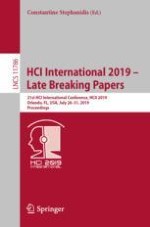Abstract
With the prosperous growing of intelligent technology, the automobile industry is developing towards an unmanned and intelligent generation. However, making a car drive in a human-like way is still a great challenge to engineers, which slows the adoption of such cars in a mass scale. Considering human perception capabilities during the design process might be a solution to this problem, and hazard perception is of great important.
The aim of the study is to propose a theoretical framework for exploring the relationship between driving environment and human perceived hazards to give suggestions on designing human-like vehicle controllers. Correlating objective environmental factors with subjective hazard ratings. Human-in-the-loop experiments were carried out on a high-fidelity driving simulator. 27 driving scenarios were designed and implemented for 14 participants to acquire their subjective hazard ratings, while objective measurements were also recorded.
Specifically, by using the proposed methodology hazard perception level of passenger can be measured by using the subjective parameters adopted during the experiment, which stands for the subjective assessment of passenger’s hazard perception. To find what dynamic parameters having a significant correlation with hazard perception level, a seven scale of subjective hazard perception was defined from –3 to 3, namely over dangerous, dangerous, a little dangerous, normal, a little cautious, cautious, overcautious. Objective measures of environment include the velocity and acceleration of the subjective car and the distance between the subjective car and obstacle. A 3*3*3 mixed ANOVA was carried out in our study in order to find out the correlation between the environment and subjective assessment. The finding shows us that the interaction of velocity and acceleration and distance has a strong correlation with the passenger’s hazard perception. The others show no correlation be-tween hazard perception assessment.
This research is with great potential to improve the development of Advanced Driver Assistant System (ADAS) and intelligent automobile from a human perspective. The findings can also be applied to the design of vehicle controllers to improve the passenger’s comfort by knowing that on what condition or what kind of control the passenger will feel dangerous and uncomfortable.
